Enjoying the High Life on the Northern Coast
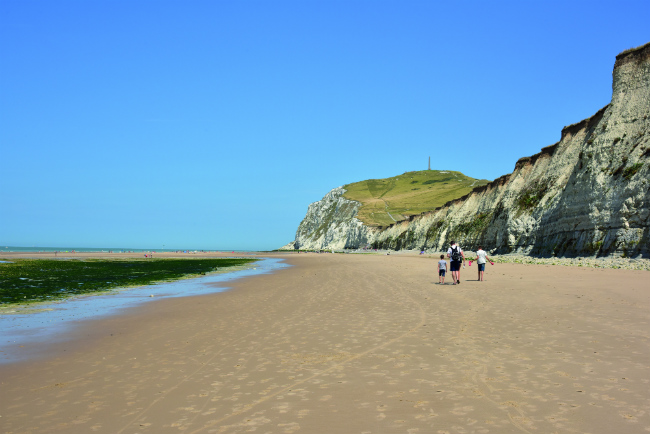
Dominic Bliss explores France’s northern coast, a glorious region of rolling coastal cliffs and vast sandy beaches, awash with history and gastronomy
There are still dead bodies deep beneath the beach at Zuydcoote. When the MV Crested Eagle was sunk during the rescue of Allied troops at Dunkirk in 1940, there were 300 servicemen on board. Nearly all of them perished when German Stukas bombed the merchant vessel, setting it on fire. The men either burned or drowned. Few bodies were ever recovered.
At low tide, you can still see this shipwreck, as the sea draws back to reveal its charred and rusted hulk. Here, in 2015, on the 75th anniversary of Dunkirk, a ceremony was held to honour those who lost their lives in that tragic event. It was attended by Prince Michael of Kent, who unveiled a plaque to commemorate the lives of these brave servicemen.
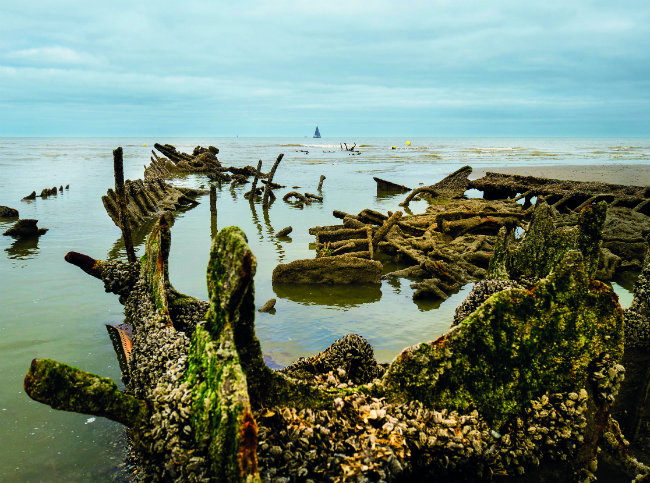
The sea-worn shipwreck of the MV Crested Eagle at Zuydcoote. Photo: Fotolia
ROYAL NAVY VETERAN
Also present at the ceremony was a 98-year-old Royal Navy veteran called Vic Viner, whose brother Bert was one of the poor souls who went down with the MV Crested Eagle. Vic had witnessed the attack from further up the beach.
“We saw her being bombed,” he told BBC News at the time. “They set light to her fuel tanks so she became a blazing inferno. The 300-odd on board were all burned to death, including Bert.”
Zuydcoote is not unique. All up and down this section of France’s northern coast there are reminders of the Second World War and the gruesome battles that took place here. Some of these reminders, like the shipwrecks that dot the coastline, or the concrete bunkers that still stand sentry on the beaches, remain exactly where they were when hostilities ceased in 1945. They are too huge and too costly to move. And besides, they now serve as crude yet poignant memorials to all those who died. They might well be here for ever.
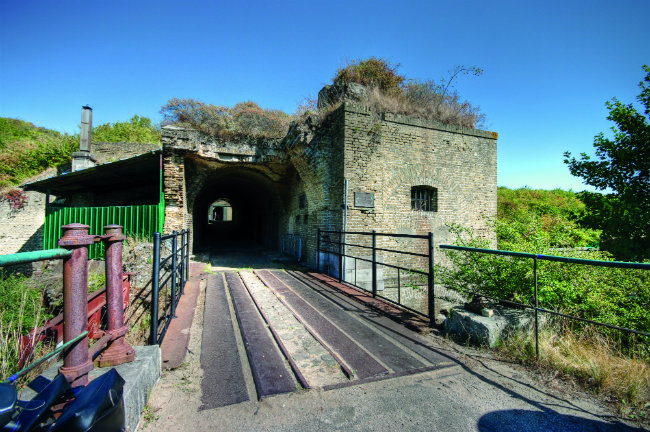
The Fort des Dunes at Leffrinckoucke played a central role in Operation Dynamo. Photo: OT Nord-Pas de Calais
Some memorials, though, are enjoying a new lease of life. On the beach at Leffrinckoucke there is a concrete bunker, sitting lopsided and half-submerged in the dunes. But it’s no ordinary bunker. An artist has transformed it completely by encasing the whole building in a mosaic shell of broken shards of mirror. The effect is jaw-dropping. Whichever direction you approach it from, you see the sun reflected differently back at you. The artist calls himself Anonyme (his maman calls him Bertrand), and his bunker is known as Le Blockhaus Miroir.
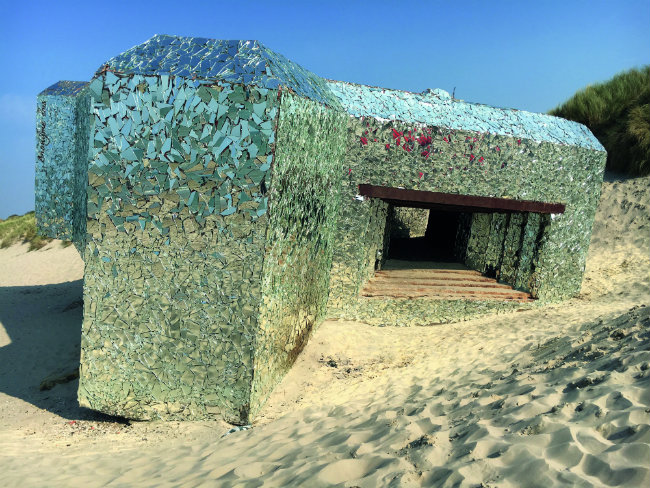
“Le Blockhaus Miroir,” by the artist Anonyme. Photo: Nord Tourisme/ Virginie Vitry
When I stumbled upon this bunker – I hadn’t known about it – it was an arresting sight. There are thousands of these concrete monstrosities sprinkled along the northern coast, each of which played its part in repelling allied soldiers attempting to land here. Finally, someone has breathed new life into one of them. Here’s how Anonyme describes his work:
“The architecture, massive, heavy and immobile, is transformed into a moving surface which changes appearance every minute, reflecting the sky and the countryside. I wanted to counteract the hard hostility of the concrete with the fragility of broken mirror. I wanted to transform this leftover from the Second World War into a monument for our memories. It’s an immeasurable absurdity, like the thousands of tons of concrete stranded here in the dunes of Flanders.”
In this part of the world you can quickly contract what I call ‘Second World War fatigue’. No disrespect intended to those who served and died here but, 73 years on, it feels like it might finally be time to look forwards instead of backwards.
Fortunately, the tourist authorities are starting to do just that. Aware that many of us Brits pass straight through the region, stopping only to visit cemeteries, or load up with cheap wine and go straight back home again, three of the départements along this northern coast – Somme, Pas-de-Calais and Nord – have teamed up to give themselves something of a new identity. Key to this identity are three natural sites right on the coast. Two of them have been officially classified as Grand Sites de France (and
the other is expecting to be soon), a label that grants them special government protection, placing them in the same category as the Camargue, the volcanoes of Auvergne, and the Pont du Gard.

The Dunes of Flandre stretch from Dunkirk to Bray-Dunes, and then into Belgium. Photo: OT de Dunkerque
First, up on the border with Belgium, are the Dunes de Flandre, over 1,000 hectares of sandy nature reserve stretching along the beach from Dunkirk. It is a site of wide, sweeping landscapes constantly changing with the rhythm of the tides and the passing ships. It’s here that you’ll find the grave of the MV Crested Eagle and Le Blockhaus Miroir, but you’ll also spot modern-day Franco-Flemish in search of shellfish, or using the flat, sandy beaches and rolling waves as a playground for sports such as landsailing, horse riding, windsurfing or kitesurfing.

The beach at Audinghen viewed from Cap Gris-Nez, with La Sirène restaurant on the right. Photo: E Desaunois
THE TWO CAPES
The second nature site, known as Les Deux-Caps: Blanc-Nez and Gris-Nez, sits between Calais and Boulogne, where the coastline turns and starts to head due south. Comprised of sandstone and chalk cliffs and uplands (some still pockmarked by Second World War bombings), this is the region’s balcony over the sea, facing out towards England – in fact, Cap Griz-Nez is the closest you can be to England while still standing in France. Even on a not-so-clear day, you can see the white cliffs of Dover mirroring the cliffs on this side of the water. And from here you can watch the constant flow of ships sailing between England and France. Those passing to your right will be on the Dover to Calais route; those beyond that will be sailing to and from Dunkirk. Those to your left are probably coming from or going to Dieppe.
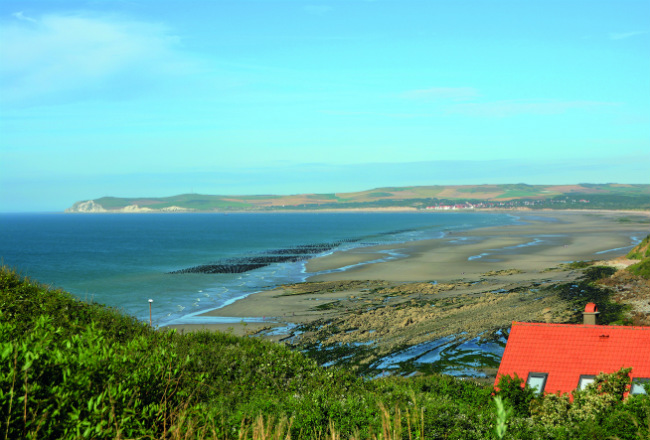
The view overlooking the Baie de Wissant. Photo: OFFICE DE TOURISME LA TERRE DES 2 CAPS
As well as boats from England, the seaside towns around the Deux-Caps have also long drawn in wealthy Parisian holidaymakers. You can see ready evidence of this influx of money in the often enormous and ornate villas at Wimereux, just before Boulogne, and at Wissant, on the eastern stretch towards Calais.
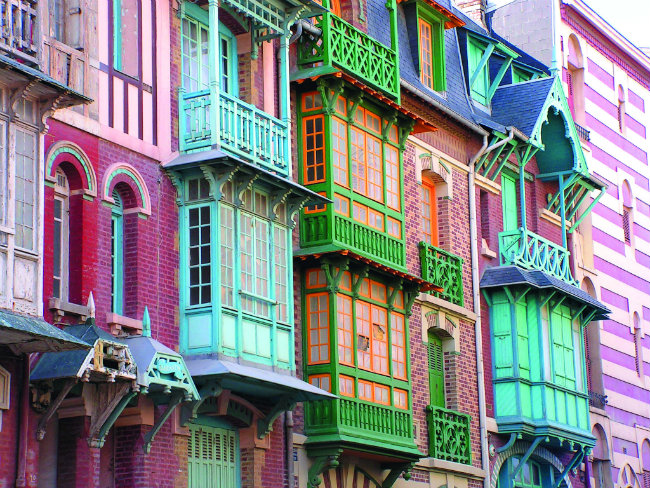
The pretty houses of Mers-les-Bains. Photo: Somme Tourism
The third nature site, south of Boulogne, on a huge estuary of six rivers near Abbeville, is the Baie de Somme. Spread over 72 square kilometres, it is visited by hundreds of species of migratory birds – and is also home to the largest colony of seals in France. A great way to explore the Baie de Somme would be to walk across it from Le Crotoy to Saint-Valery-sur-Somme (or vice versa) at low tide. It takes about three hours, and the slippery mud can upend even the most sure-footed, but with a local guide (Maxim at www.guide-baie-somme.com comes recommended) you’ll make it across to tell the tale.
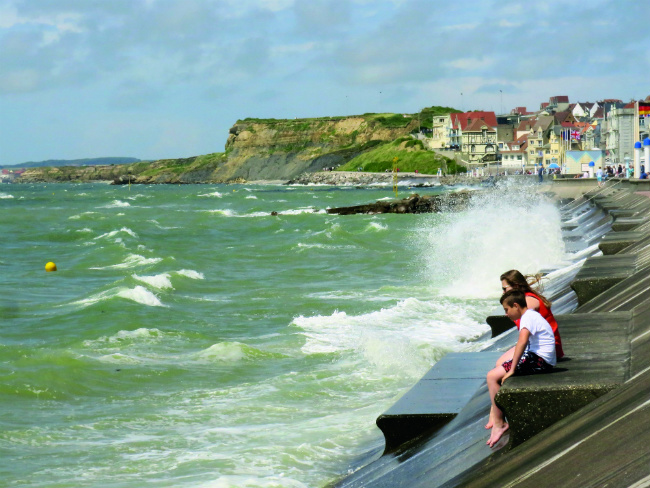
Watching the sea at Wimereux. Photo: A. Chaput / Pas-de-Calais Tourisme
Unfortunately, the tides were against me on this occasion. Instead I spent a blustery morning seal-spotting from the pebble beaches with a very knowledgeable guide. The seals are protected now but, right up to the early 20th century, the locals hunted them for food and fuel.
Nowadays, local meat comes instead in the form of the lambs that graze on the salty marshes that line the bay. The grass they eat gives their meat a salty taste so distinct that in 2006 they were granted their own AOC label. Other terroir products of the region include some of the herbs that grow along the shore, as well as shrimp, cockles and, of course, mussels.
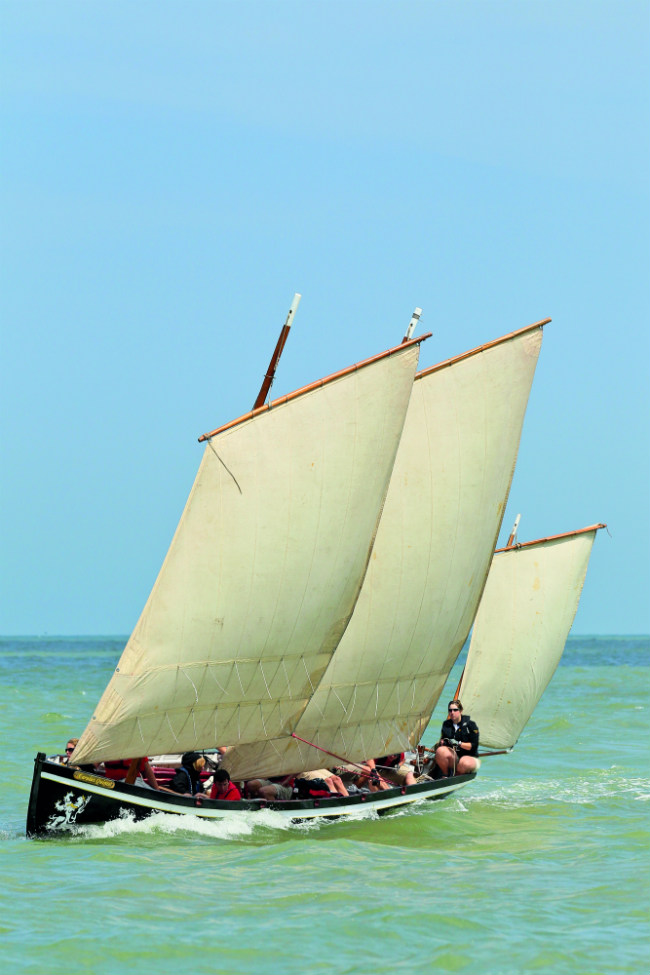
Sailing from Dunkerque. Photo: Frederik Astier
BIRD SANCTUARY
Near the bay is an amazing wildlife park called Parc du Marquenterre. This is one of France’s best bird sanctuaries. Laid out over 200 hectares of dunes, forests and marshland, at various times of the year it’s home to 300 or so species, including storks, avocets, spoonbills, egrets, curlews, herons, oyster-catchers, and just about every kind of duck you care to think of. I spent an intriguing afternoon with a British guide whose enthusiasm for his feathered charges was infectious. Our visit ended at the largest and most impressive of the many lookouts. Here, from inside the hide, there’s a sweeping vista across a line of tall trees hosting dozens and dozens of stork, spoonbill and egret nests. These birds, with their huge wingspans, ungainly flight and aggressive calls, resemble a colony of pterodactyls from Jurassic Park. It was a thrilling climax to the tour.
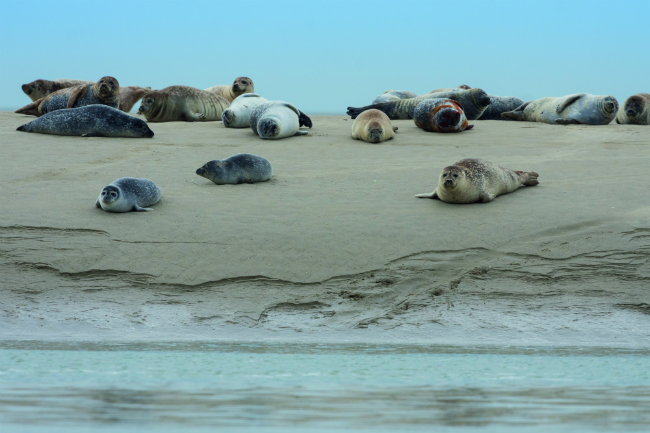
The Baie de Somme. Photo: OT Nord-Pas de Calais
They do nature properly in this part of the world. In Boulogne, for example, you’ll find Nausicaá, the largest sea aquarium in Europe, with around 58,000 marine animals sloshing around in 4.5 million litres of water. Watch leopard sharks rub fins with Argentine perch; see jellyfish dance with tentacles intertwined; and sea horses drape themselves over multicoloured corals. Admire the sea lions as they perform their aquatic ballet, or the penguins strutting up and down the edge of their pool. And at Nausicaá’s new building, you can watch hammerhead sharks and manta rays from inside an observation tunnel running 18 metres beneath the main tank. If you manage to get to just one man-made tourist attraction along this stretch of coast, make it this one. You won’t be disappointed.
For more information visit www.northernfrancecoast.com
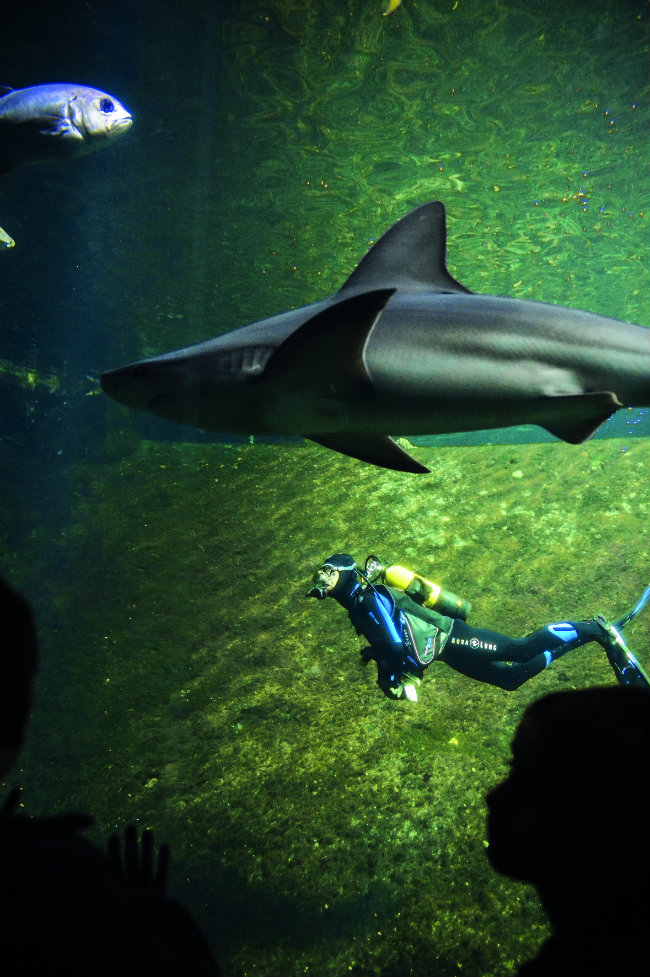
Nausicaá. Photo: Yannick Cadart
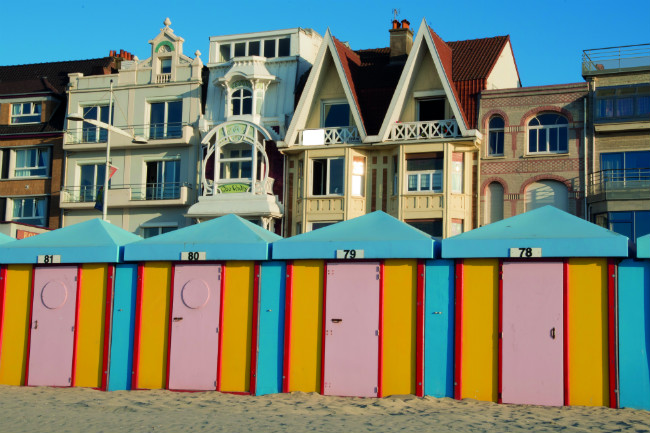
Beach huts at Dunkirk. Photo: OT Nord-Pas de Calais
Sidebar: Gastronomic Specialties
Everything here, obviously, revolves around seafood. Oh, and beer. Make sure you indulge yourself with a big bowl of moules-frites, but don’t miss out on the wonderful fresh fish dishes available pretty much everywhere. You’ll love buying direct from the fishermen’s markets, les criées. Local favourites include herring en papillote, waterzooi (fish stew), and caudière boulonnaise (fish hotpot with onions, potato, garlic and white wine). Meat is widely eaten, too. A speciality is the lamb from the Baie de Somme, which has a distinctively salty taste thanks to the estuary grass it feeds on. Andouille is also popular, but an acquired taste, to say the least.
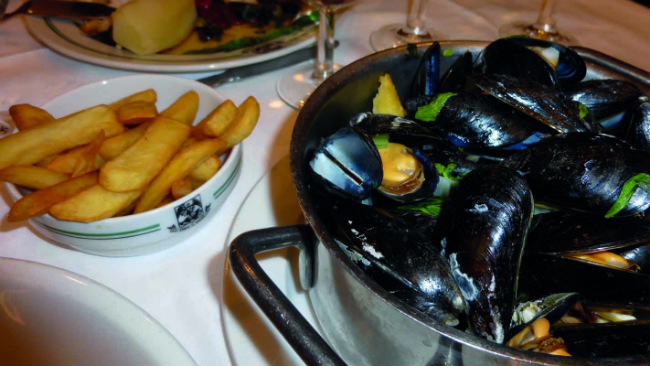
Moules-frites
The cheeses here are quite superb. Try the Coeur d’Arras, Vieux-Boulogne, Boulette d’Avesnes, Bergues, Mimolette, Maroilles and the Vieux-Lille, a ripened maroilles soaked in brine. (Its nickname is Puant, ‘Stinky’.)
Now for the beer. You’ll find many micro-breweries dotted across the region, all producing artisanal beer of various types, much of it very rich, strong and fruity. Some breweries offer tours and tastings.
From France Today magazine
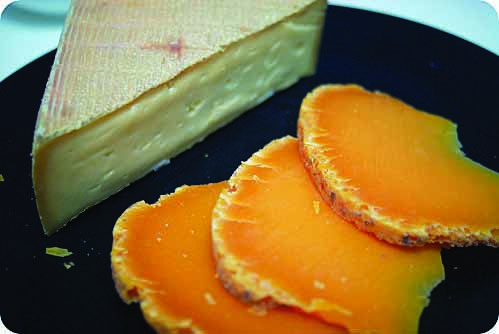
Mimolette and Maroilles cheese
Share to: Facebook Twitter LinkedIn Email
Leave a reply
Your email address will not be published. Required fields are marked *

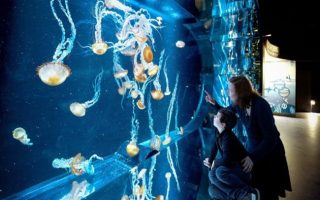
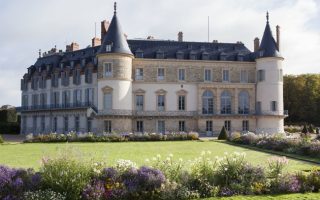

REPLY
REPLY